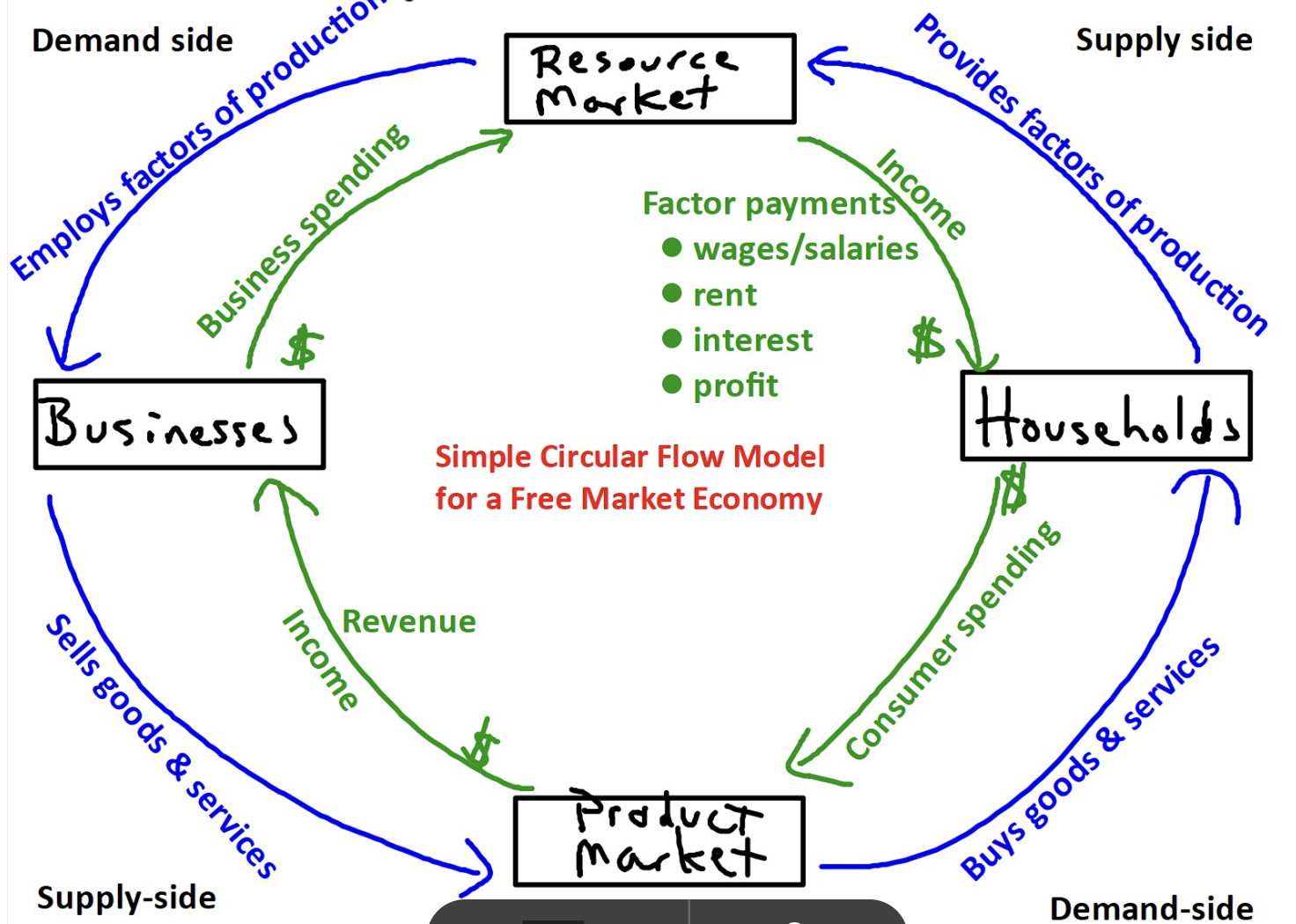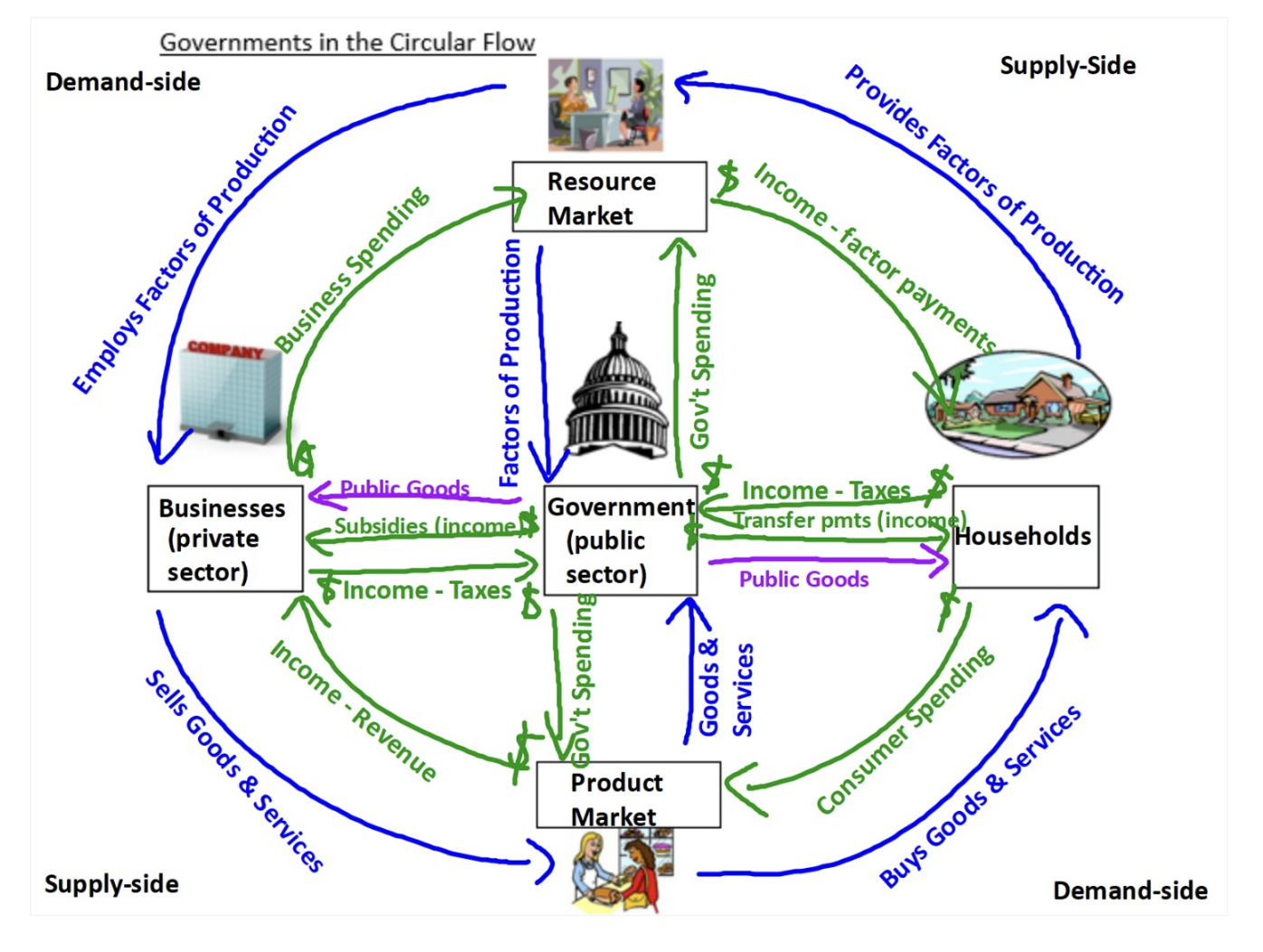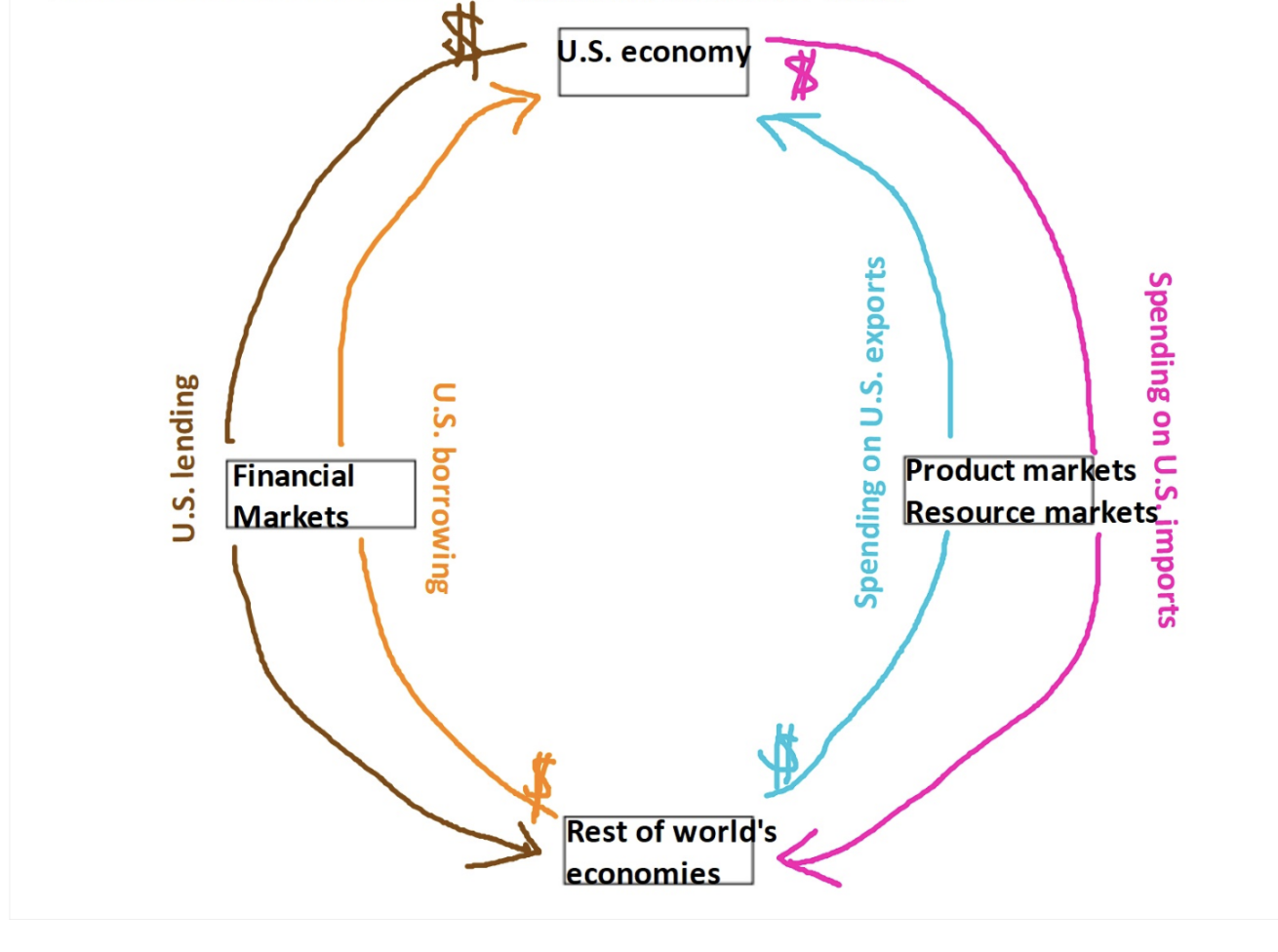Lesson 4: The Circular Flow Models
1/18
There's no tags or description
Looks like no tags are added yet.
Name | Mastery | Learn | Test | Matching | Spaced |
|---|
No study sessions yet.
19 Terms
Circular Flow Model (Diagram)
a model of the economy that shows the circular flow of expenditures and incomes that result from decision makers’ choices and the way those choices interact to determine what, how, and for whom goods and services are produced. Named this because buying and selling of resources and goods and services creates flows between households and firms in both types of markets.
6 Pieces of Building the Simple Circular Flow Model
Two parties
Households
Business/firms
Two Markets
Product (Goods and Services) Market
Resource (Factor) market
Two Flows
Real Flow
Money Flow
Households
Individuals or groups of people living together (sharing expenses)
Business (firms)
Institutions that organize production of goods and services
Markets
Mechanism/ any arrangement that brings buyers and sellers together and enables them to get info and do business with each other (not necessarily a physical place, just transactions)
Product (Goods & Services) Market
markets in which goods and services are bought and sold
Resource (Factor) Markets
markets in which services of factors of products are bought and sold
Real flow
created by movement of actual items between households and firms— either resources (factors of production) or goods and services (products)
Money flow
payments that flow between households and firms for resources (factors of production) or goods and services (products)
Simple Circular Flow Model for a Free Market Economy
Limitation: Doesnt show business to business
Real flows stay together and money flows stay together (separate circles)
Arrow goes in one direction only
Money flow must be associated with real flow

Mixed economy: Governments in the Circular Flow

6 Real Flows
Factors of Production from Households to Business thru Resource Market
Factors of Production from Households to Government thru Resource Market
Goods and Services from Business to Households thru Product Market
Goods and Services from Business to Government thru Product Market
Public Goods from Government to Households (neither market)
Public Goods from Government to Business (neither market)
7 Money Flows
Consumer Spending by Households thru Product Market
Business Spending by Business thru Resource Market
Government Spending by Government thru both Resource Market and Product Market
Factor Payments (Income) to Households thru Resource Market
Revenue (Income) to Business thru Product Market
Taxes (Income) to Government by Households and Business (neither market)
Transfer Payments/Subsidies by Government to Households and Business (neither market)
Two main ways that Households and firms in US economy interact with households and firms in other economies
International trade (buy and sell)
International Finance (lend and borrow)
International trade
buy and sell goods and services (and resources). Imports and exports
Imports
Goods and Services bought from firms of other countries
Exports
Goods and Services that we sell to households and firms in other countries (doesnt need to leave country to be consumed (ex. international education)
International Finance
Borrow (at a lowest interest rate, needed when value of imports exceed value of exports) and lend
Circular Flows in the Global Economy
These are all MONEY flows (no REAL flows)
